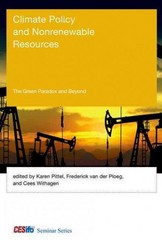Question
Human Capital Externalities Consider the 2-period model of educational choices discussed in class. Consider the case in which there are no credit constraints and use
Human Capital Externalities
Consider the 2-period model of educational choices
discussed in class. Consider the case in which there are
no credit constraints
and use
exactly the same notation as in the notes. Assume that the educational production
function is
f
(
S
) = 1 + ln (
S
)
and that the cost function is
C
(
S
) =
c
S
. Under the
assumption that individuals use schooling choices to maximize the present value of
their "cash-on-hand", answer the following questions:
(a) Derive mathematically the marginal-cost and marginal-benefit curves of educa-
tion, then draw them in a clearly labeled figure and show
graphically
the optimal
level of schooling.
(b) Derive
mathematically
the optimal level of schooling and discuss the factors that
influence its level.
(c) Now suppose that a policy maker realizes that
individual
schooling choices have
an effect on
societal
outcomes, such as aggregate productivity or aggregate health
outcomes. Economists call such effects "Externalities". Let the societal benefit
of the individual choice of schooling
S
be captured by the function
B
(
S
) =
b
S
for some positive constant
b
. (you may think of
B
as a measure of aggregate
productivity, and the function
B
(
S
)
be a schedule of how individual choices aect
this measure). Assume that the objective of the policy maker is that individuals
choose a level of schooling that maximizes the individual cash-on-hand (as in parts
(a) and (b))
plus
the discounted value of the benefit
B
(
S
)
that materializes in
the second period.
1. Write down a mathematical expression for this sum.
2. Repeat part (a), but now using the objective of the policy maker, which
includes the schooling externality in period 2.
3. Repeat part (b), but now using the objective of the policy maker, which
includes the schooling externality in period 2.
4. Compare the optimal level of schooling derived in (b) with the optimal level
of schooling derived in (c)-(iii). Is the schooling level preferred by the pol-
icy maker smaller, larger or identical to the schooling level preferred by the
individual?
5. Can you think of a policy that aligns the interests of the policy maker in terms
of optimal schooling levels with the interests of the individual? Be specific.
Step by Step Solution
There are 3 Steps involved in it
Step: 1

Get Instant Access to Expert-Tailored Solutions
See step-by-step solutions with expert insights and AI powered tools for academic success
Step: 2

Step: 3

Ace Your Homework with AI
Get the answers you need in no time with our AI-driven, step-by-step assistance
Get Started


